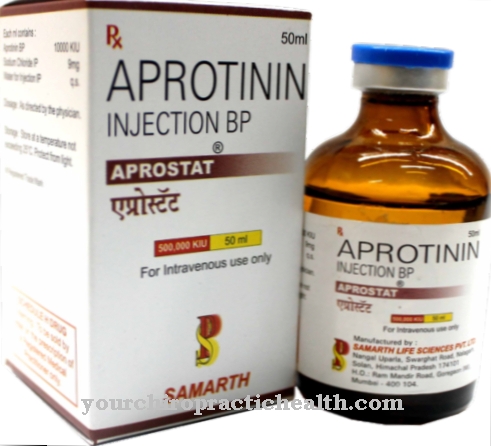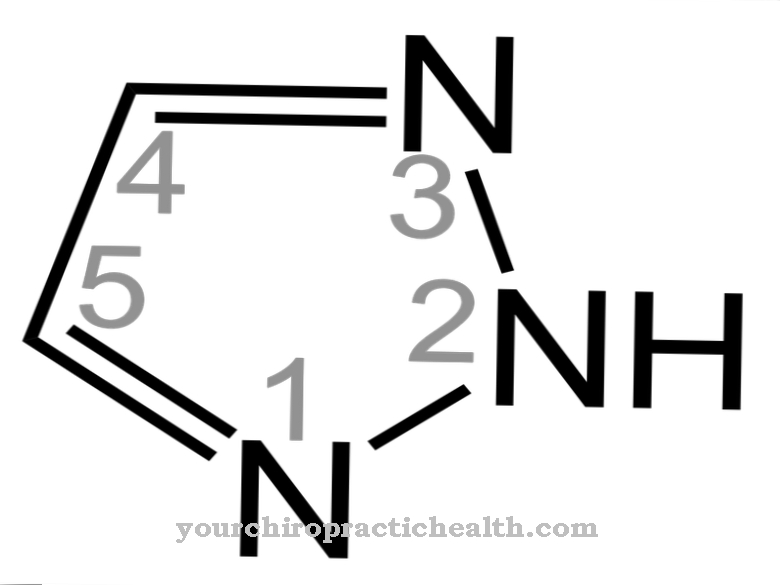Amfepramon is an indirect alpha sympathomimetic and is used in Germany as an appetite suppressant. Due to the not inconsiderable potential for abuse, the active ingredient is only prescribed briefly in urgent cases for the supportive treatment of obesity.
What is amfepramone?

Amfepramon is also known as 2-diethylamino-1-phenylpropan-1-one, 2-diethylaminopropiophenone, amfepramonum or diethylpropion. It belongs to the group of phenylethylamine derivatives. These are chemical compounds derived from phenylethylamine. Phenylethylamines are widespread in nature (for example the neurotransmitter dopamine or the amino acid-like substance tyramine) or are manufactured artificially (for example certain amphetamines).
In the field of phenylethylamines, amfepramone belongs to the subgroup of cathinones. The name for the cathinones is derived from the compound cathinone, which belongs to the amphetamines and has a stimulating effect. Amfepramon also acts as a stimulant and stimulates the sympathetic nervous system, part of the autonomic (vegetative) nervous system.
It is assigned to the active ingredient group of alpha sympathomimetics. It is commercially available as a prescription drug under the tradenames Regenon and Tenuate. Amfepramon falls under the Narcotics Act in Germany, but is marketable and can be prescribed by a doctor.
Pharmacological effect
Alpha sympathomimetics (also known as alpha adrenoceptor agonists) act on the autonomic nervous system. This is also called the involuntary or autonomous nervous system because it cannot be willingly influenced. The active ingredients stimulate a certain part of this nervous system, the sympathetic nervous system.
Amfepramone acts as an indirect alpha sympathomimetic. While direct alpha-sympathomimetics mimic the effects of adrenaline by binding to the same receptors, indirect alpha-sympathomimetics lead to the release of dopamine and norepinephrine. These then stimulate the sympathetic system. In this way, amfepramone stimulates the cardiovascular system and certain organs, but also has a central nervous effect on brain activity by crossing the blood-brain barrier.
The active ingredient briefly increases physical and psychological performance and increases alertness. The blood flow to the lungs, blood pressure and heart rate increase. Amfepramone also suppresses the feeling of tiredness, inhibits thirst and causes (via a point of attack located in the hypothalamus) a reduction in food intake and appetite.
Due to the diverse effects on the whole organism, a prescription of amfepramone will be carefully considered by the doctor in order to avoid undesirable effects.
Medical application & use
Alpha sympathomimetics are used, among other things, as anorectics (appetite suppressants). Amfepramon is used for supportive treatment in overweight (obese) patients with a body mass index (BMI) over 30.
The BMI is calculated using the following formula: BMI = body weight in kilograms / (body height in meters) 2. However, the active ingredient should only be used if other suitable measures to reduce weight have not been successful. In patients who have not been able to achieve weight loss through diet and exercise, but who urgently need to lose weight for medical reasons, the doctor may decide on short-term treatment with amfepramone.
Since it is an anorectic with a central nervous effect, side effects are frequent and there is a potential for abuse. In the summer of 2001, the Federal Institute for Drugs and Medical Devices (BfArM) withdrew its approval for appetite suppressants with amfepramone due to side effects.
The manufacturers successfully sued against this. The preparations have been on the market again since 2004. However, the effectiveness for actual, long-term weight loss is controversial. Amfepramon is therefore only prescribed in individual cases and is generally only used for the short-term treatment of obesity.
Risks & side effects
Amfepramon (like many alpha sympathomimetics) has a not inconsiderable potential for abuse and dependence. It was therefore classified as a narcotic and included in Appendix 3 of the German Narcotics Act (marketable and prescription narcotics).
The German BfArM and other EU drug authorities expressly point out the low medical benefit in relation to the serious side effects. Side effects included psychosis, depression, hallucinations, restlessness, insomnia, racing heart, high blood pressure, dizziness, and drowsiness. Amfepramon also seems to promote the development of pulmonary hypertension (pulmonary arterial hypertension).
In some patients, treatment with amfepramone can cause dangerous cardiac arrhythmias, including heart attack or cardiac arrest. Long-term use of amfepramone may lead to dependence and withdrawal symptoms after discontinuation of the drug.












.jpg)



.jpg)










.jpg)
